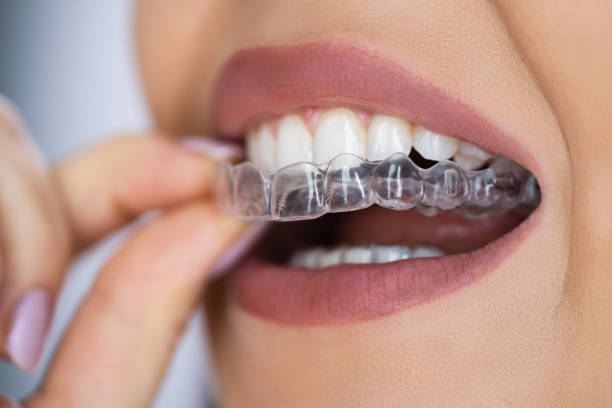Braces and Dental Splints: Your Essential Guide to Straightening and Protecting Your Teeth
Discover the world of braces and dental splints—solutions that can help you achieve straighter teeth and protect your smile.
Discover the world of braces and dental splints—solutions that can help you achieve straighter teeth and protect your smile.

Are you considering braces or dental splints to correct alignment issues? These orthodontic appliances are designed to straighten your teeth, correct bite problems, and improve your overall oral health. Braces and dental splints have been used for decades to help people of all ages achieve a more even and aesthetically pleasing smile. In this comprehensive guide, we'll look at the different types of braces and dental splints available, their benefits, how they work, and what you can expect during the treatment process. Whether you have crowded teeth, gaps, overbites, underbites, or other dental issues, there's a solution that can help you achieve a healthier, more confident smile.
Types of Braces and Dental Splints
When it comes to orthodontic treatment, there are several types of braces and dental splints to choose from.
- Traditional metal braces are one of the most common options, featuring metal brackets that are bonded to your teeth and connected with wires. These braces are very effective at correcting a variety of dental issues and are suitable for patients of all ages.
- Ceramic braces are another popular choice for those looking for a more discreet option. These braces blend in with your natural tooth color, making them less visible than traditional metal braces.
- Lingual braces are attached to the back of your teeth, making them virtually invisible from the front.
- Invisalign, a type of clear aligner system, has gained popularity in recent years due to its discreet appearance and removable features. These custom-made aligners gradually move your teeth into the desired position without the use of brackets or wires.
Benefits of Braces and Dental Splints
Braces and dental splints offer a wide range of benefits that go beyond straightening teeth. Improved oral health is a significant benefit, as straighter teeth are easier to clean and less susceptible to cavities and gum disease.
Properly aligned teeth also contribute to better overall oral hygiene and can help prevent future dental problems. Increased self-confidence is another benefit of orthodontic treatment. Many people experience increased self-esteem and are more likely to smile and socialize after completing braces or dental splints. Additionally, addressing alignment issues can improve speech and chewing function, leading to a better overall sense of well-being.
Treatment Process and Maintenance
Before beginning orthodontic treatment, your dentist or orthodontist will conduct a thorough examination of your teeth and jaws to determine the best course of action. X-rays, photographs, and impressions may be taken to create a personalized treatment plan for you. Depending on the type of braces or dental splints you choose, the length of your treatment may vary. Regular adjustments and check-ups are necessary during treatment to ensure that your braces or dental splints are effectively moving your teeth.
Good oral hygiene is essential to prevent cavities and gingivitis during treatment. Brushing, flossing, and using interdental brushes or water flossers can help maintain good oral health. Once your braces or dental splints are removed, you may be prescribed a retainer to prevent your teeth from moving back to their original position. It is important to wear your retainer as instructed by your orthodontist to maintain the results of your treatment.
Potential Risks and Complications
While braces and dental splints are generally safe and effective, there are some potential risks and complications to be aware of during treatment. Tooth decay and gum disease can occur if you do not maintain good oral hygiene while wearing braces. Irritation of the cheeks, lips, and tongue may also occur as the mouth adjusts to the presence of the braces. In some cases, patients may experience discomfort or pain after the adjustment, but this usually goes away within a few days. Allergic reactions to the materials used in braces or dental splints are rare but possible. If you experience severe pain, swelling, or other unusual symptoms, it is important to contact your orthodontist immediately.
Choosing the Right Option for You
When deciding between braces and dental splints, it's important to consult with a qualified dentist or orthodontist to determine the best option for your needs. When making your decision, consider factors such as the severity of your dental problems, your lifestyle and preferences, and your budget.
Each type of orthodontic treatment has its pros and cons, so carefully consider your options. If you're concerned about the appearance of traditional braces, clear aligners like Invisalign may be a better option. For more complex dental issues, traditional braces or lingual braces may be a more effective solution. Your orthodontist will work with you to create a treatment plan that aligns with your goals and expectations.
Final Thoughts on Braces and Dental Splints
Braces and dental splints are valuable tools in achieving a straighter, healthier smile. Whether you're a teenager looking to improve your self-confidence or an adult looking to address long-term dental issues, orthodontic treatment can make a significant difference in your oral health and overall well-being. By understanding the benefits, risks, and maintenance associated with wearing braces or dental splints, you can begin your journey toward a more beautiful and functional smile.